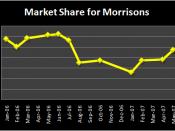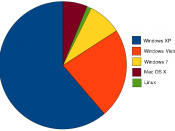a) As marketing manager of Brand A, should your company desire more or less customers that follow Timothy's buying behaviour? Describe Timothy's buying behaviour and give reasons to explain your answer.
Answer: From the information shown in the panel data showing the buying brands of breakfast cereal in one particular week by a group of customers, we can see that Timothy purchased six times of cereal including two brands with 2 times for brand B and 4 times for brand B during the period time of one particular week. The customer seems to have some purchase preference of brand A when he wants to purchase the product of cereal. According to the "Dirichlet Model", the possibility for a customer to purchase a brand of product is not affected by the other brands that the customer also purchases. As a marketing manager of Allround brand, I hopefully expect the customer to regard Allround as their first brand when they make purchase in the product category which means Allround brand can be more possibly purchased by the customer even if the purchase happens randomly.
Since the panel data come from a particular period of time, we notice that Timothy purchase four times of cereal of brand A, from which we can infer that Timothy should be a heavy buyer of brand A. Therefore, the Allround Company will absolutely desire the customers who follow Timothy's the buying behaviour. For according to the "20:80" rule, the 20% of the buyers (heavy buyers) generates 80% of the total profits for a brand in a product category. Though such heavy do not have 100% loyalty for a brand but they generally have a much better brand imagine on the brand. If possible, they will introduce the brand to those potential buyers (i.e. family...


